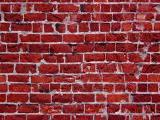Recently in object recognition Category

What does this tell us about sensation & perception?
See more of these ads at - http://www.hongkiat.com/blog/creative-ads-from-att-wireless-international-roaming/
(Thanks to Laura for sending)
"You'd be able to literally see all around you, including behind yourself, and zooming in at will, creating a "stereoscopic/binocular system, simultaneously providing 10x zoom to both eyes." And you would do this all hands-free, apparently by barking out or pre-programming a command (the solicitation leaves it up to a designer's imagination) to adjust focus."
http://www.wired.com/dangerroom/2010/12/pentagon-wants-to-give-troops-terminator-vision/

This is an interesting site that makes small pieces of foam board look like full size buildings. What do we know about our perceptual system that can explain how this happens?
http://www.009.cd2.com/members/how_to/nouaillier_a.htm

"Sayaka Kajita Ganz is an artist that creates amazing unique sculptures made from a different plastic pieces like spoons, forks, toys and similar. She creates sculptures of different animals from a thousands of plastic pieces."
http://sciencehax.com/2010/02/animal-sculptures-made-of-hundreds-of-plastic-pieces/

When Christian Jahn, a 37-year-old graduate student, was 13, he wouldn't leave the house without wearing a heavy Arctic jacket. In Southern California, that was enough to set him apart. But Christian was obsessed with what he deemed an even more troubling physical anomaly: He was terrified of his own face.
Over the next 15 years, Jahn almost flunked out of college, then dropped out of law school - all because of a fixation on physical flaws. Then he caught an episode of "Oprah" about obsessive compulsive disorder. A little more online research yielded another related illness: body dysmorphic disorder (BDD). Suddenly, Jahn's mysterious and life-altering condition had a name.
To read more click the link below:
New Research May Help Those Afraid of Own Looks
"NASA's HiRISE camera, the most powerful camera ever sent into space, has snapped breathtaking portraits of Mars. From 'trees' on Mars to an 'organic cemetery,' see the 'Red Planet's' craters, dunes, gullies, and even avalanches in stunning detail in the slideshow below."
http://www.huffingtonpost.com/2010/01/21/mars-pictures-nasas-most_n_431137.html
How does the brain resolve ambiguity? Experience this for yourself when you watch this slide show. Use a little introspection and 'watch' how your brain tries to go about it's job making sense of the extraordinary pictures in this slide show.

What do we know about perception that might make up believe her leg was photoshopped off?
http://www.huffingtonpost.com/2010/01/06/emma-watson-for-burberrys_n_413731.html

Have you ever seen 300,000 birds move at once? Buzzfeed posted this video of a massive flock of starlings swarming together over an unspecified area in Denmark, forming a dark, shape-shifting cloud. For all the Harry Potter fans out there, it bears a frightening resemblance to a Dementor.
How is it that a bunch of smaller objects can take the form of a larger object? Does the larger object maintain the sense of the original organic onjects that make it up? How do the gestalt principles account for these perceptions?
http://www.huffingtonpost.com/2009/11/08/300000-birds-swarm-over-d_n_350039.html
A comprehensive study of road safety (Treat et al., 1977) found that human error was the sole cause in 57% of all accidents and was a contributing factor in over 90%. In contrast, only 2.4% were due solely to mechanical fault and only 4.7% were caused only by environmental factors. Other studies have reported similar results.
http://www.visualexpert.com/Resources/roadaccidents.html

Synesthesia is a condition in which one sense (for example, hearing) is simultaneously perceived as if by one or more additional senses such as sight. Another form of synesthesia joins objects such as letters, shapes, numbers or people's names with a sensory perception such as smell, color or flavor. The word synesthesia comes from two Greek words, syn (together) and aisthesis (perception). Therefore, synesthesia literally means "joined perception."
http://faculty.washington.edu/chudler/syne.html
Also see:
http://en.wikipedia.org/wiki/Synesthesia

We'll start with a simple brain (or a simple computer) which consists of four simple elements connected as shown to the left. The bottom two ovals we'll call "input" units and the filled circle we'll call an "output" unit. They are actually all we really need (for present purposes), but things will work a little better if we have a fourth "bias" element, the circle with the B in it.
http://serendip.brynmawr.edu/complexity/perceptron/learning.html

What does this tell us about how the visual system attempts to resolve ambiguity? What are the gestalt principles? Which of these principles would describe what is going on here? Is this an example of a bi-stable illusion?
http://serendip.brynmawr.edu/bb/ambigfig/AmbigCheeta!.jpeg

This site has hundreds of images of textures. Why are textures so important to the visual system?



I had to put this one up. This is a great example of how the visual system tries to resolve the retinal image. Is this a lamp or a woman in a bikini? How does the visual system try to resolve this? After giving it a try - check the answer by clicking on the continue reading link below.
One way we can learn about how effortlessly the brain seemingly separates objects out from a visual scene is to examine how the brain has difficulty doing so. Can you see the man in the picture below? More.








Recent Comments